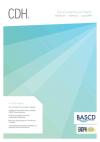Community Dental Health

- Cover Date:
- June 2019
- Print ISSN:
- 0265 539X
- Electronic ISSN:
- 2515-1746
- Vol:
- 36
- Issue:
- 2
What evidence do economic evaluations in dental care provide? A scoping review
10.1922/CDH_4426Eow08
Objective: To collate the body of evidence in economic studies of different dental interventions. Methods: Eligible English studies after 1980
were sourced from MEDLINE using MeSH terms and reviewed independently by 4 teams. Studies were grouped according to the type
of dental intervention and their quality appraised using Drummond’s Checklist. Results: The number of dental economic studies increased
from 1980 to 2016. A total of 91 studies were identified following the search strategy. Most studies were conducted in the United States
(n=23), followed by Germany (n=14), Australia (n=10) and the United Kingdom (n=9). Preventative dental interventions comprised 37%
of included studies (n=34), followed by restorative (n=14), prosthodontic (n=13) and periodontal interventions (n=12). Cost effectiveness
analyses (n=68) comprise 75% of full economic evaluation (EE) studies, followed by cost-utility (n=17) and cost-benefit (n=6). Quality
assessment checklists identified 60 studies as good, 23 as moderate and 8 as poor. Common methodological limitations were identified
in EE studies. Comparison of studies identified trends and common findings within each dental intervention. Conclusion: High quality
economic studies are important in directing resources and funding by policy makers. Standardisation of reporting outcome measures will
improve the potential for interpretation and comparison between studies. Research adhering to recommended quality assessment checklists
will improve the overall quality of evidence to better identify cost-effective treatments for different dental interventions.
Keywords: Dentistry, oral health, dental economics, economic evaluation, cost-effectiveness analysis, cost-utility analysis, cost-benefit analysis
- Article Price
- £15.00
- Institution Article Price
- £
- Page Start
- 118
- Page End
- 125
- Authors
- J. Eow, B. Duane, A. Solaiman, U. Hussain, N. Lemasney, R. Ang, N. O’Kelly Lynch, G. Girgis, L. Collazo, B. Johnston
Articles from this issue
- Title
- Pg. Start
- Pg. End
- Editorial - How soon is soon enough? The challenge of implementing behaviours conducive to good oral health in at-risk infants and toddlers
- 89
- 90
- What influences use of dental services by the Korean disabled people? The role of perceived barriers in dental care system
- 101
- 105
- In-school toothbrushing programs in Aboriginal communities in New South Wales, Australia: A thematic analysis of teachers’ perspectives
- 106
- 110
- Relationship between Caregivers’ Oral Health Literacy and their Child’s Caries Experience
- 111
- 117
- The Effectiveness of Reform in the Dental Health Systems of Transitional Countries: The Case of Montenegro Health Reform (pilot study)
- 126
- 130
- Costs of dental care and its financial impacts on patients in a population with low availability of services
- 131
- 136
- Comparison of two measures to determine the oral health-related quality of life in elders with periodontal disease
- 143
- 149
